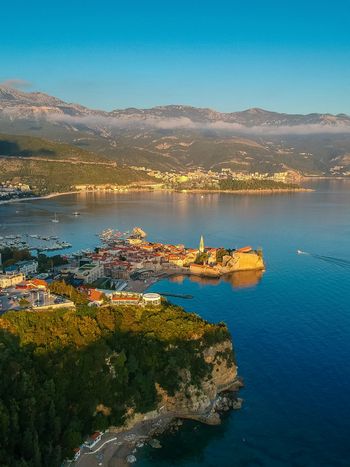How Working Groups work
ELECTRA traditionally includes summaries of Technical Brochures that have been produced by Working Groups (WG). CIGRE has over 240 Working Groups today working to solve relevant problems in our industry globally. This is the underlying power of CIGRE - a global collaborative community with your participation.

By Rob Stephen, Editor-in-Chief of the CIGRE Science & Engineering Journal and former CIGRE President (2016 - 2020)
I wanted to share how the Working Groups are formed and how they work to produce over 40 Technical Brochures per annum. I personally have been involved in a Working Group for 30 years and have chaired many. This has been a great honour and experience. I would urge you get involved in working group activities irrespective of your age (I started at 31).
Establishment of a Working Group
The Working Group normally starts with a suggestion from a Study Committee (SC) member or advisory group member. Depending on the SC, the suggestion normally passes to a Customer Advisory group, or the entire SC, in the form of a “Terms of Reference (TOR)” for either reject, modify or accept the proposal. The SC chairperson then considers the proposal, if accepted, it is sent to the Technical Council (TC) for comments and then to the Technical Council (TC) Chair for approval. This may seem tedious, but it is essential to ensure that the topic and output are well defined. The TC Chair needs to approve the TOR to ensure no other SCs are addressing similar issues. This is determined after a process in which all other SC Chairs may give their comments and opinions. If there is an overlap, a joint Working Group may be suggested
Working Group chairperson
The SC chairperson selects the Working Group chairperson (or jointly with other SC chairpersons if there is a joint WG). This is a very important decision and can result in success or otherwise of the Working Group. I am sure you must have been involved in many such teams or Working Groups in your work environment. The CIGRE Working Group is often more complicated than that in your company. The reason is the Working Group consists of experts from around the world. These experts may have different native languages; have different experiences and different views on the topic. The Working Group chairperson needs to understand the potential differences and interpretations of the Working Group members. The language used is normally English. A good understanding of all inputs is necessary to ensure the adherence of the new TOR with the CIGRE main strategic directions.
In addition to managing a meeting of such diverse cultures, languages and experiences, the Working Group chairperson needs to determine the chapters of the Technical Brochure, allocate tasks to WG members to populate the chapters, and perform the final collation. The latter task is the most time consuming and requires editing to allow the brochure to flow correctly with the correct interpretation of the English provided. Often this task is left up to the chairperson and secretary of the Working Group who normally perform most of the work.
Membership
The number of members in each new group varies according to the particular scope, general interest and available experts. CIGRE normally limits National Committees to submit one or two persons to take part. One key issue is to have all nominated members truly participating in the tasks. As such I, when chairing a Working Group, do not limit members too strictly but will only place the names of the contributors on the Technical Brochure when published.
Diversity is critical for the success of the Working Group in CIGRE. As such, a Working Group should have membership from each continent at least if possible. In addition, there should be young and experienced members as well as women and men. The quality of the Technical Brochure is enhanced with a more diversified group.
Time to produce Technical Brochures
CIGRE are often criticised for taking too long to produce Technical Brochures. Many technical statements, formulae etc, need to be checked and accepted as international best practice. This takes time and often requires some additional research. The output in the end is a high class, peer reviewed, technical document, which forms the basis of international best practice or international standards. The average time for a Working Group to produce a brochure is normally around four years. There are examples where this time has been exceeded (although some brochures have been completed in under one year). One relevant example is the production of TB 278 dealing with damping of conductors. This took many years to produce due to the many models and variables involved. In depth research around the world, contributed to the document. Once produced, this brochure is one of the foundations for vibration control of conductors. CIGRE needs to avoid Working Groups becoming permanent “talking groups” and the Study Committee chairperson needs to ensure Working Groups are working towards delivering output in line with the Terms of Reference. To rush Working Groups may also produce sub-standard outputs.
When developing chapters and discussing issues, WG’s often have valuable information that can be used by members before the final version of the brochure. To disseminate this information, we have now introduced a newsletter entitled “Future Connections” which includes technical articles and findings from Working Groups and Study Committees whilst the Technical Brochure is in development. This provides interim findings to members, which can be very useful. Full articles are published in ELECTRA in the “Global Connections” section. Another recent initiative is based on CIGRE Academia webinars, in which advanced or completed Working Group findings are disseminated to everyone by the web. We have promoted this new “tool” on a monthly basis. Please check our page on LinkedIn or on the eCIGRE homepage.
Get involved in Working Groups
Involvement in Working Groups is one of the most rewarding activities you can undertake in your career. It exposes you to the sharpest and most respected minds in the world dealing with a particular topic. Information gleaned from discussions, both formal and informal, is vital in growing your knowledge of the topic and widening your knowledge and horizons relating to the topic. If travel is an issue I suggest sign up as a corresponding member where you will have full access to the information, can contribute and need not attend meetings physically. CIGRE also has facilities to allow WG members to share documents and organise the works (Knowledge Management System – KMS), and web conferencing solutions (GoToMeeting) for virtual attendance at meetings.
In summary the Working Groups are the “engine room” of CIGRE where the networking is paramount to production of Technical Brochures. National Committees receive notice of new Working Groups and disseminate this information to members. Please take note of these and get involved.

CIGRE active Working Groups / Call for experts
Thumbnail & banner credit: jacoblund on iStock












